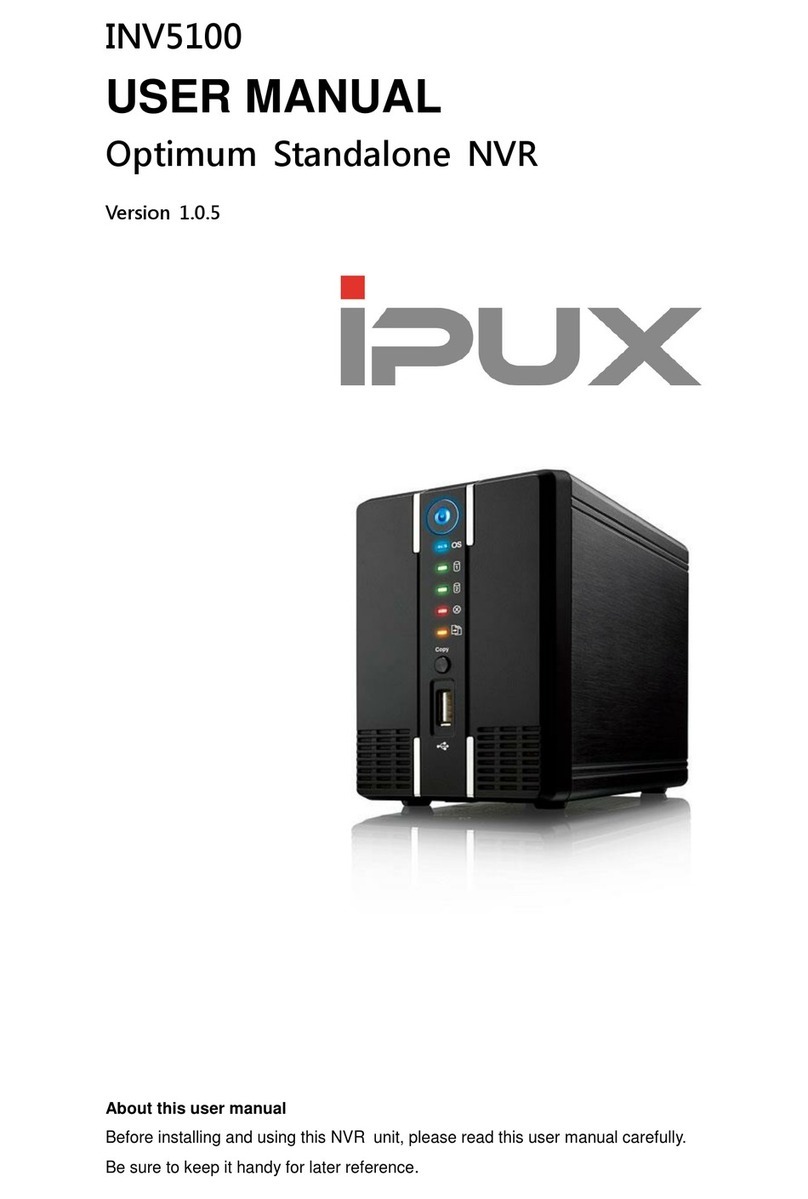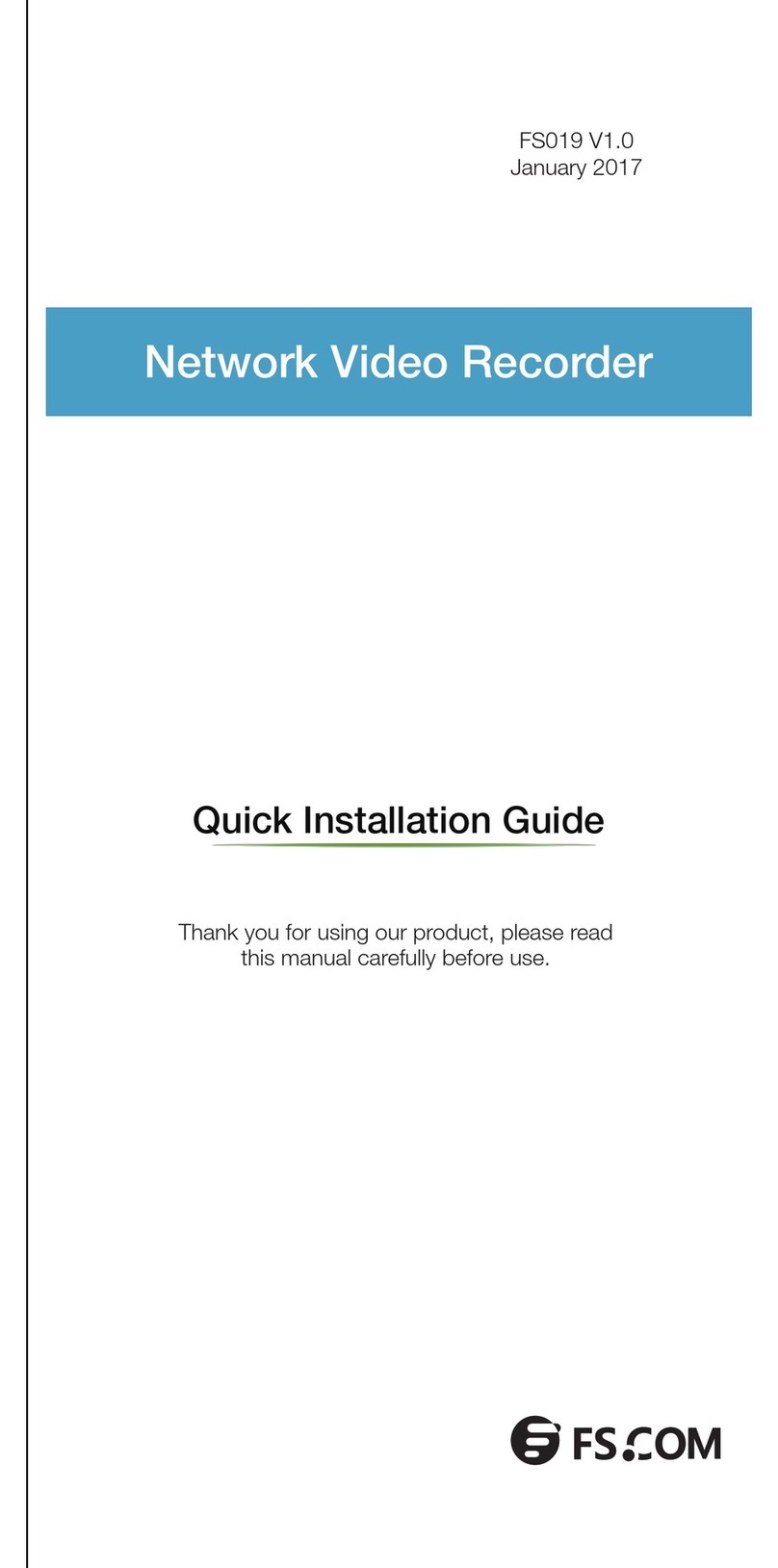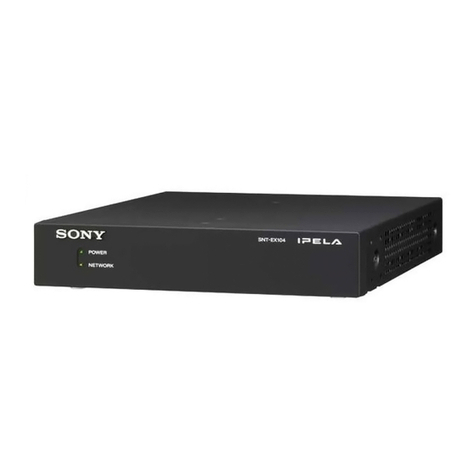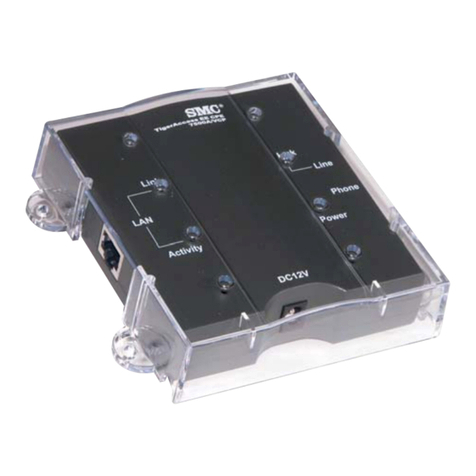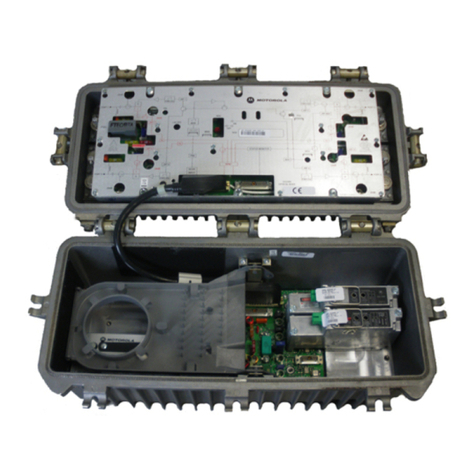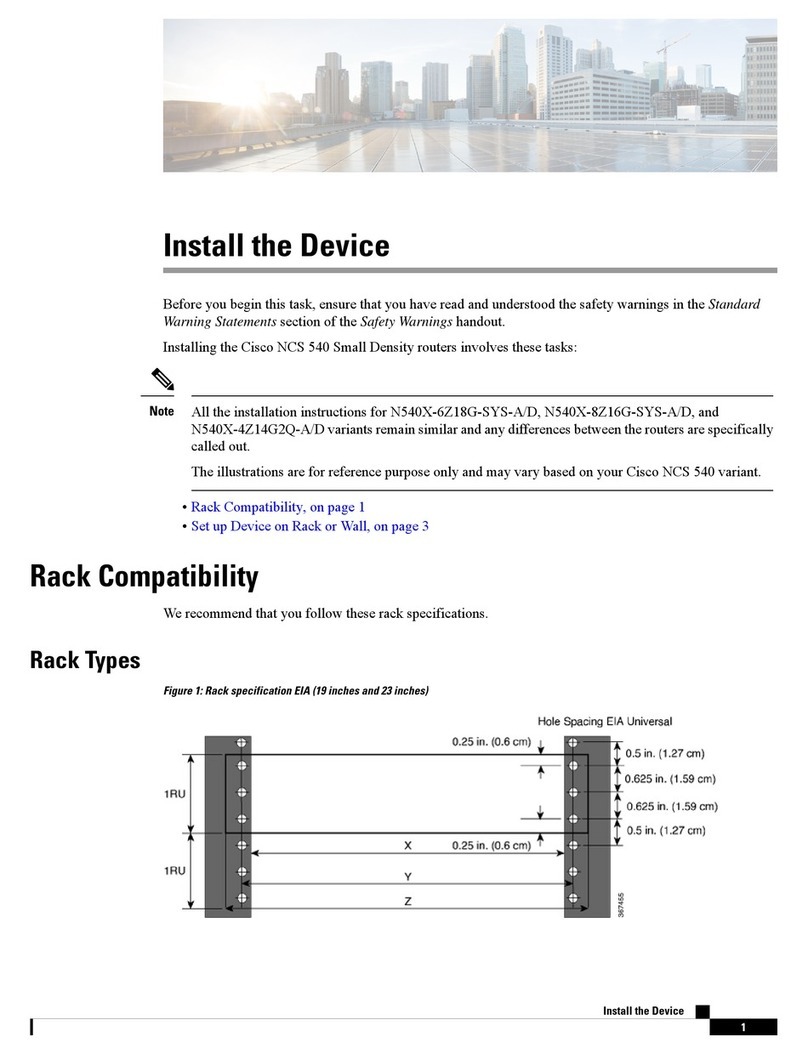AeroDiode AOM Series User manual

AeroDIODE - Institut d’optique d’Aquitaine - Rue François Mitterrand
33400 Talence - France - Tél.: +33 (0)6 27 69 41 62
www.AeroDIODE.com
User Manual
AOM Series
Fiber coupled AOM
& RF Drivers

Page 1/12 – v3.3
Contents
Revision Sheet............................................................................................................................. 1
1. General information ............................................................................................................... 2
1.1 Definitions ........................................................................................................................ 2
1.2 General warning............................................................................................................... 2
2. Safety Instructions .................................................................................................................. 3
2.1. AOM Safety instruction.................................................................................................... 3
2.2. RF Driver Safety instruction ............................................................................................. 3
2.3. Contact ............................................................................................................................. 4
3. Package Content ..................................................................................................................... 4
4. Absolute Maximum Ratings.................................................................................................... 4
4.1. AOM ................................................................................................................................. 4
4.2. RF Driver........................................................................................................................... 4
5. Installation .............................................................................................................................. 4
5.1. AOM installation .............................................................................................................. 5
5.2. RF Driver installation........................................................................................................ 5
6. Specifications .......................................................................................................................... 7
Revision Sheet
Release
No.
Date
Author
Revision Description
V1.0
25/09/2021
SER
First version
V1.1
Second version
V1.2
11/06/2023
SER
Third version – highlight the critical RF power level
Disclaimer : Information in this document is subject to change without notice.
Copyright © AeroDIODE
Bât. IOA, rue François Mitterrand
33400 Talence – France
www.AeroDIODE.com

Page 2/12 – v3.3
1. General information
Please read this manual carefully. It describes the hazard the user might be exposed to while
using the product. It also explains in details how to use the product in the safest and most
efficient possible way. The safety of any system incorporating the product is the responsibility of
the assembler of the system. Any actions taken by the user that is not clearly described in this
user manual might present a risk and is the sole responsibility of said user.
This product is to be used in laboratory or industrial tasks, and only by personnel who have
followed a training in laser hazard.
This product is an OEM device for system integration. It is designed for use as a component (or
replacement) part and is thereby exempt from 21 CFR1040.10 and 1040.11 provisions. Make sure
it is not put in operation before the machine in which it will be integrated has been declared
to be compliant with the relevant requirements of the current directives :
•2006/25/CE (following for example the regulation NF EN 60825-1) (Europe)
•21 CFR1040.10 and 1040.11 provisions (USA)
1.1 Definitions
Caution : A “caution” is advised when dealing with hazardous situations, tasks or objects, to
prevent harm or death and avoid material damage or failure.
Warning : A “warning” is given for potentially dangerous situation for people which cause them
harm or lead to death
Note : A note is a complementary piece of advice that must be acknowledged by the user.
1.2 General warning
Caution
The compatible laser sources used with the AOM can deliver up to several Watts of coherent
LASER radiation. Always wear protective goggles and observe the safety instructions provided
by the laser diode supplier when using the AOM and/or AOM driver with your laser source.
WARNING
Do not try to open or remove the cover of the AOM or RF driver modules.

Page 3/12 – v3.3
WARNING
Avoid all shocks and strains when handling the AOM
WARNING
Handle the fiber-optic cables with care as it is fragile. Do not bend or pinch it.
WARNING
Any settings or hardware tinkering that is not described in this user manual or in the usage
recommendation may put the user or its environment at risk.
WARNING
The maintenance and servicing of the AOM should NOT be executed by the end user : only
AeroDIODE is able to maintain the AOM.
2. Safety Instructions
2.1. AOM Safety instruction
WARNING
Not following the safety recommendations and the caution mentioned above can lead to eye
damage.
2.2. RF Driver Safety instruction
Caution
Do not power up the signal output interface when it is open or shorted. Risk of permanent
damage.
Caution
The product should be well grounded, otherwise the performance can be affected.
Caution
The product is sensitive to ESD.

Page 4/12 – v3.3
2.3. Contact
If you have any question about the AOM module, please contact AeroDIODE :
www.aerodiode.com
3. Package Content
The AOM modules comes with:
•1 AOM module with 900 µm fiber and 2* FC/APC fiber connectors.
•A USB Key with the current user manual in pdf
The Driver part comes with :
•An SMA-SMA cable to connect the Driver to the AOM
•A special cable with Banana plugs to connect to a benchtop power supply
4. Absolute Maximum Ratings
4.1. AOM
•Optical power (CW) : refer to the AOM model Datasheet
•Storage temperature -40 to +85℃
•Operating temperature 0 to +60℃
•Caution : Applying a maximum RF power (voltage) above the maximum efficiency can
lead to AOM permanent damage. As a first test level : a maximum RF power below
2W must be securely set.
4.2. RF Driver
•Operating voltage: +25V
•Control signal levels from 0 to +5.5V
•Storage temperature -40 to +85℃
•Operating temperature 0 to +60℃
5. Installation

Page 5/12 – v3.3
5.1. AOM installation
1. Wear safety Googles
2. Wear a proper and working ESD wrist strap;
3. Caution : Set the module on a heat dissipating surface (an optical table works fine). Letting
the AOM in air with no dissipating surface leads to overheating and permanent damage.
4. The light can be inserted in any direction. The performance are the same (insertion loss,
extinction ratio etc.)
5. Caution : when using another RF driver, The RF power shall not be set over the maximum
diffraction efficiency level. A power over 2W can lead to a permanent damage. The RF
power must be adjusted progressively from 0 V up to the maximum diffraction level.
5.2. RF Driver installation
The product is dissipated by conducting heat. The product shall be mounted on a metal structure
using fixing screws. The mounting surface shall be flat with minimum size and thickness. A certain
amount of space should be reserved around and above the product.
The product is powered by a DC of + 24V, and the power connector is supplied with a per-centric
capacitor; The core of the heart capacitor is connected to the positive power supply, and the
grounding sheet of the heart capacitor is connected to the negative pole of the power supply.
The characteristic impedance of the product signal output port is 50 Ω.
The product receives both external pure analog and/or digital modulation.
The adjustment of RF output power is achieved by changing the resistance of a multi-turner : turn
clockwise to increase the output power, turn counterclockwise to decrease the output power.
1. Make sure the RF Driver has the correct RF frequency required by the AOM model (model
1 : 100 MHz, model 2 : 200 MHz, model 3 : 80 MHz ; model 4 : 200 MHz).
2. Make sure the RF Driver model is the one you need (TTL input or Analog input).
3. Connect the RF driver to the AOM with the SMA cable. If you use the modular model
RFAOM-TA-200, set the S1-S4 switch to the proper configuration (see below )
4. Caution : Place the module on a heat dissipating surface (an optical table works fine).
Letting the RF driver in air with no dissipating surface leads to overheating and permanent
damage.
5. Connect a 24V >0.5A power supply to the RF driver
6. Caution : The RF power shall not be set over the maximum diffraction efficiency level. A
power over 2W rapidly leads to a permanent damage. The RF drivers power level (little

Page 6/12 – v3.3
screw) is normally set in a safe area allowing a correct diffraction efficiency. If ever it is
adjusted, this must be done progressively from 0 V up to the maximum diffraction level.
7. Connect the trigger signal and make sure you apply the good electric signal :
•TTL 5V-50 Ohm for standard RF-AOM-T-xxx model,
•Analog 0-5V signal for RF-AOM-A-xxx
•Any signal (0-5V or 0.1V) for the modular RFAOM-TA-200 model
8. If you need to optimize the insertion loss, apply a small optical CW signal at the proper
wavelength and apply a CW trigger signal to the RF Driver. Use a screwdriver (Ø 3mm –
Multiturn) to adjust the RF power to get maximum optical power at the output of the
AOM.
Figure 1 Example of integration of standard model (either RF_AOM-T-xxx or RF_AOM-A-xxx ) at
either 80, 100 or 200 MHz :

Page 7/12 – v3.3
Figure 2 : Model RFAOM-TA-200 S1-S4 settings
RFAOM-TA-200 Configuration switch :
•S1:Down : TTL high ; Up : TTL low input signal configuration setting
•S2:Down : TTL mode active ; Up : TTL mode disabled
•S3:Down : Analog input range : 0 -1V ; Up : Analog input range 0 - 5V.
•S4:Down : Analog mode active ; Up : Analog mode disabled
6. Specifications
6.1. AOM Modules :
Model 1, 3, 5, 7 : Standard version – (ex model 7 : 1030/1064 nm )
Reference: 1064AOM-1 Technology/Crystal : TeO2*
SPECIFICATIONS
Unit
Min
Typ.
Maximum
Comments
Material
TeO2
Wavelength (model 7)
nm
1000
1064
1090
Customizable
Max Average optical power
W
3
Insertion loss (model 7)
dB
1
1.5
2.0
Extinction ration (1st order
on/off)
dB 50
Return loss (RF ON)
dB
40
Rising time
ns
45
50
Frequency
MHz
100
Frequency shift
MHz
+/- 100
RF Power
W
1.5
1.8
Input Impedance
Ω
50
Electrical input interface
SMA
Fiber type
PM980
Customizable
Fiber length
m
1
Customizable

Page 8/12 – v3.3
Pigtail termination
FC/APC
Customizable
Working temperature
°C
-20
60
Storage temperature
°C
-30
70
Dimensions (without fiber
boots)
mm 60*25*12.5
Mounting holes diameter
mm
3
*: See our tutorial : fiber modulator
Model 2, 4, 6 8 : High speed version – (ex : model 8 : 1030/1064 nm)
Reference: 1064AOM-2 Technology/Crystal : TeO2*
SPECIFICATIONS
Unit
Min
Typ.
Maximum
Comments
Material
TeO2
Wavelength (model 8)
nm
1000
1064
1090
Customizable
Max average optical power
W
2.5
3
Insertion loss
dB
2.0
2.5
3.0
Extinction ration (1st order
on/off)
dB 50
Return Loss (RF ON)
dB
40
Rising time
ns
8
9.5
10
Frequency
MHz
200
Frequency shift
MHz
+/- 200
RF Power
W
2.5
Input Impedance
Ω
50
Electrical input interface
SMA
Fiber type
PM980
Customizable
Fiber length
m
1
Customizable
Pigtail termination
FC/APC
Customizable
Working temperature
°C
-20
60
Storage temperature
°C
-30
70
Dimensions (without fiber
boots)
mm 67*23*15
Mounting holes diameter
mm
2.5
*: See our tutorial : fiber modulator
Model 9, 11, 13 : Standard version – (ex : model 11 : 1550 nm)
Reference: 1550AOM-1 Technology/Crystal : TeO2*
SPECIFICATIONS
Unit
Min
Typ.
Maximum
Comments
Material
TeO2
Wavelength (model 11)
nm
1520
1550
1580
Customizable
Average optical power
handling
W 0.5
Peak optical power handling
KW
0.5
Insertion loss
dB
2.0
2.5
3.0

Page 9/12 – v3.3
Extinction ration (1st order
on/off)
dB 50 55
Rising time
ns
50
Frequency
MHz
80
Frequency shift
MHz
+/- 80
RF Power
W
2.5
Input Impedance
Ω
50
Electrical input interface
SMA
Fiber type
PM1550
Customizable
Fiber length
m
1
Customizable
Pigtail termination
FC/APC
Customizable
Working temperature
°C
-20
60
Storage temperature
°C
-30
70
Dimensions (without fiber
boots)
mm 60*25*12.5
Mounting holes diameter
mm
3
*: See our tutorial : fiber modulator
Model 10, 12, 14 : High speed version – (ex : model 14 : 1550 nm )
Reference: 1550AOM-2 Technology/Crystal : TeO2*
SPECIFICATIONS
Unit
Min
Typ.
Maximum
Comments
Material
TeO2
Wavelength (model 14) :
nm
1520
1550
1580
Customizable
Average optical power
handling
W 0.5
Peak optical power handling
KW
0.5
Insertion loss
dB
4.0
4.5
5.0
Extinction ration (1st order
on/off)
dB 55 60
Rising time
ns
8
9.5
10
Frequency
MHz
200
Frequency shift
MHz
+/- 200
RF Power
W
3
Input Impedance
Ω
50
Electrical input interface
SMA
Fiber type
PM1550
Customizable
Fiber length
m
1
Customizable
Pigtail termination
FC/APC
Customizable
Working temperature
°C
-20
60
Storage temperature
°C
-30
70
Dimensions (without fiber
boots)
mm 45*28*12
Mounting holes diameter
mm
3
*: See our tutorial : fiber modulator

Page 10/12 – v3.3
6.2. RF Drivers :
Model 1 : Standard version for digital (TTL) Input trigger ; 3 RF models :
80, 100 or 200 MHz
Reference: RFAOM - T – 80, 100 or 200 (MHz)
SPECIFICATIONS
Unit
Min
Typ.
Maximum
Comments
Output Frequency
MHz
80 or 100 or 200 MHz
Choose your version
Output power W 0.1 2.8 3
Adjustable with a
screwdriver
Impedance matching
Ohm
50
Extinction ratio
>70 dB
Synchro Input
Digital (TTL)
Synchro input interface
SMA
RF to AOM interface
SMA
Working voltage
V
24
Dimensions
mm
81*58.5*15
Interhole distances /
Hole diameters
mm 75*52.5 / 4
Model 2 : Standard version for analog (0-5V) input trigger ; 3 RF models :
80, 100 or 200 MHz
Reference: RFAOM - A – 80, 100 or 200 (MHz)
SPECIFICATIONS
Unit
Min
Typ.
Maximum
Comments

Page 11/12 – v3.3
Output Frequency
MHz
80 or 100 or 200 MHz
Choose your version
Output power W 0.1 2.8 3
Adjustable with a
screwdriver
Impedance matching
Ohm
50
Extinction ratio
>30 dB
Synchro Input
Analog (0-5V)
Synchro input interface
SMA
RF to AOM interface
SMA
Working voltage
V
24
Dimensions
mm
81*58.5*15
Interhole distances /
Hole diameters
mm 75*52.5 / 4

Page 12/12 – v3.3
Model 3 : Special version ; for AOMs with 200 MHz RF signal only
Reference: RFAOM - TA - 200
SPECIFICATIONS
Unit
Min
Typ.
Maximum
Comments
Output Frequency
MHz
200 MHz
Output power W 0.1 2.8 3
Adjustable with a
screwdriver
Impedance matching
Ohm
50
Synchro Input
TTL (high or low), Analog (0-1V) and Analog (0-5V)
Extinction ratio (Analog mode /
TTL mode)
30 dB / 70 dB
Synchro input interface
SMA
RF to AOM interface
SMA
Working voltage
V
24
Dimensions
mm
103*54*20.5
Interhole distances /
Hole diameters
mm 97*48 / 3.3
•S1 : TTL high / TTL low input
•S2 : TTL mode active/inactive
•S3 : Analog input range : 0-1V / 0-5V
S4 : Analog mode active/inactive
•Adjustable RF power (multi-turner)
Table of contents
Popular Network Hardware manuals by other brands
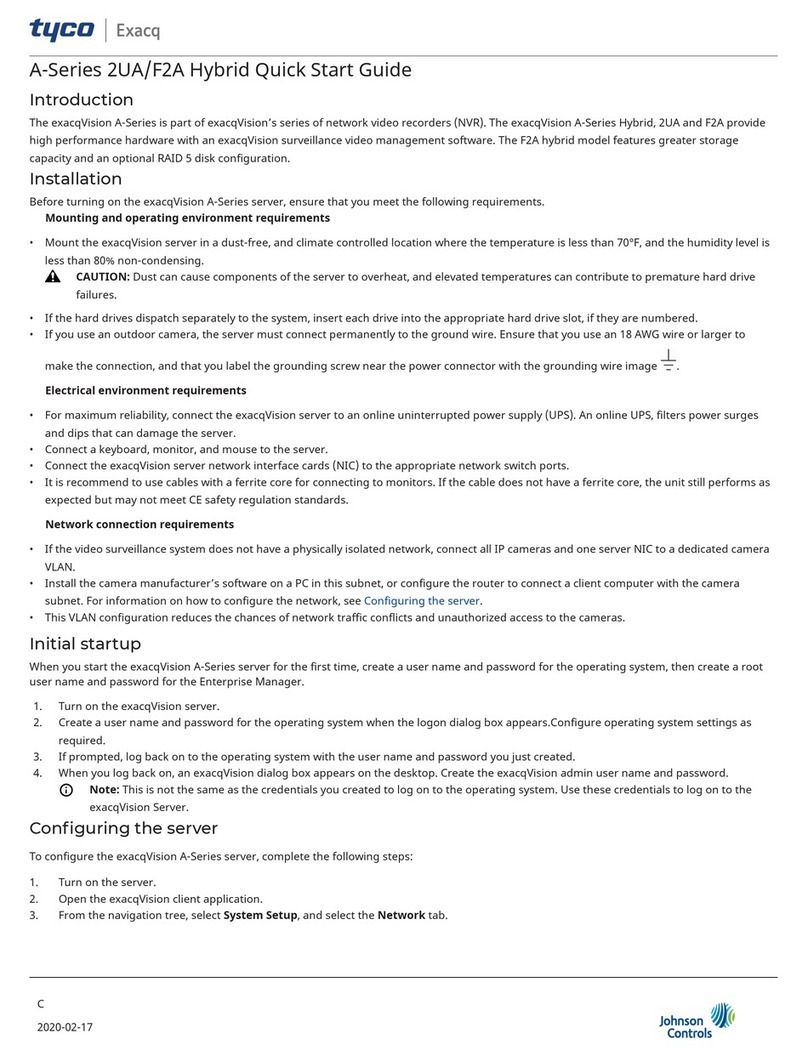
Johnson Controls
Johnson Controls Tyco exacqVision 2UA quick start guide
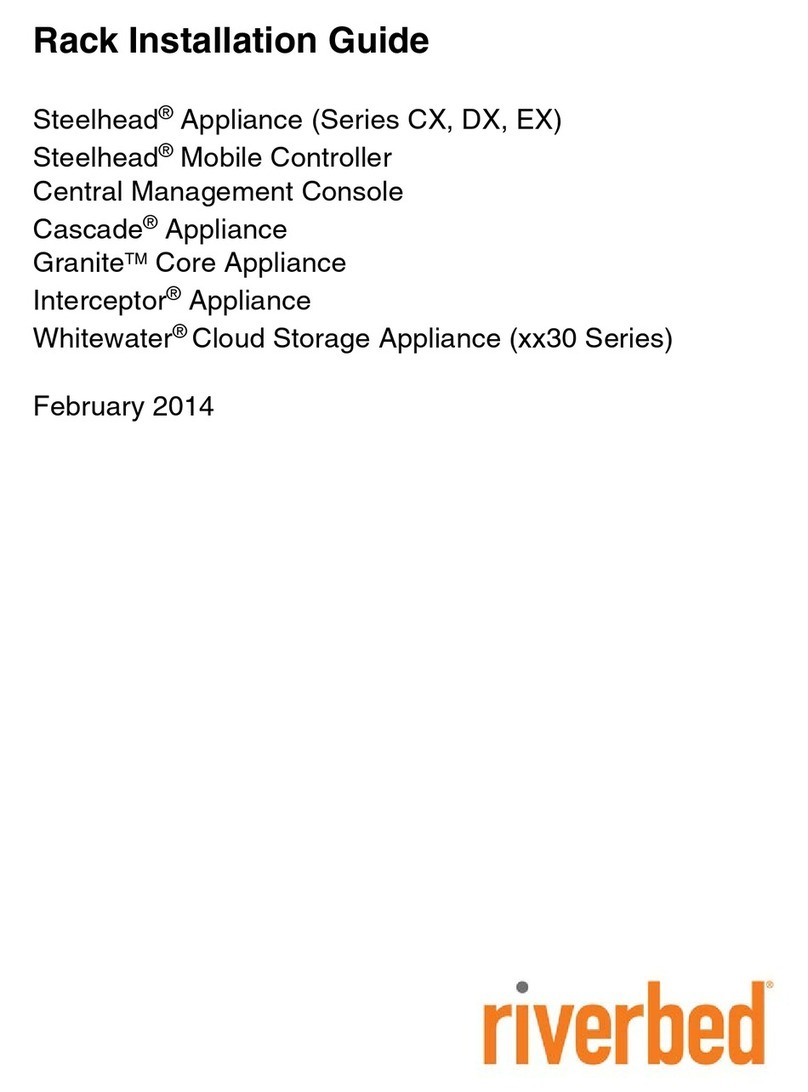
Riverbed
Riverbed Steelhead CX Series installation guide
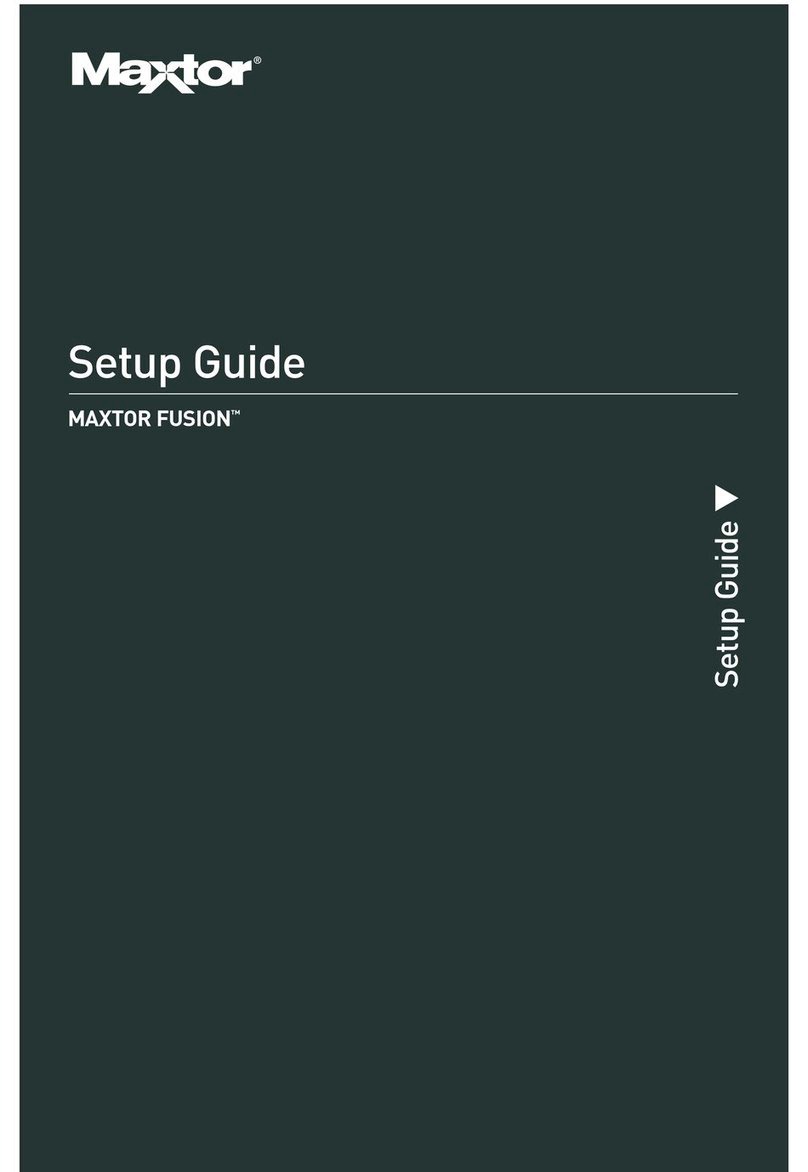
Maxtor
Maxtor Maxtor Fusion Setup guide
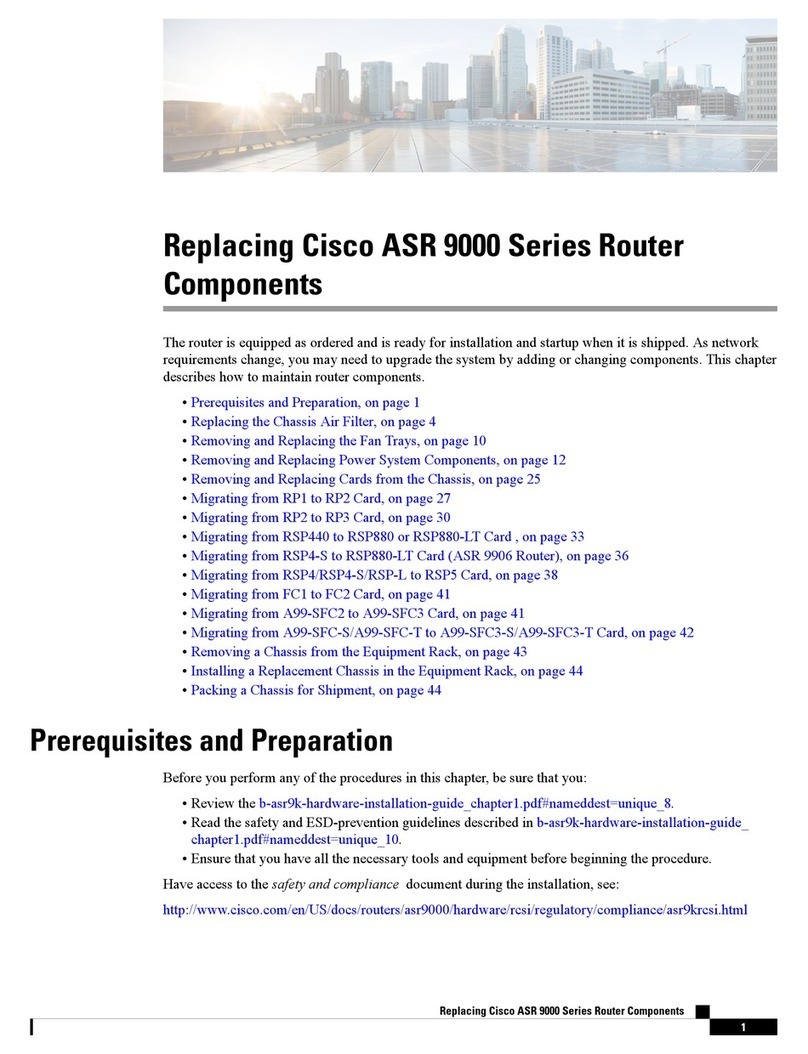
Cisco
Cisco ASR 9000 Series manual
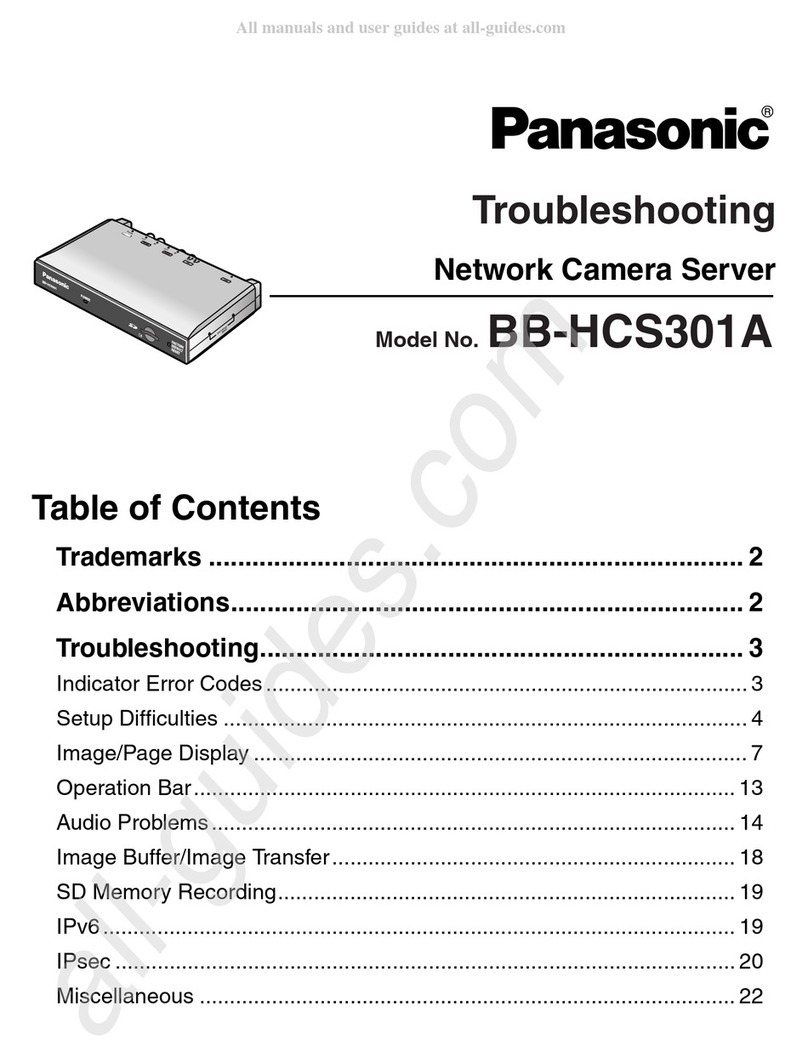
Panasonic
Panasonic BB-HCS301A - Network Camera Server Troubleshooting
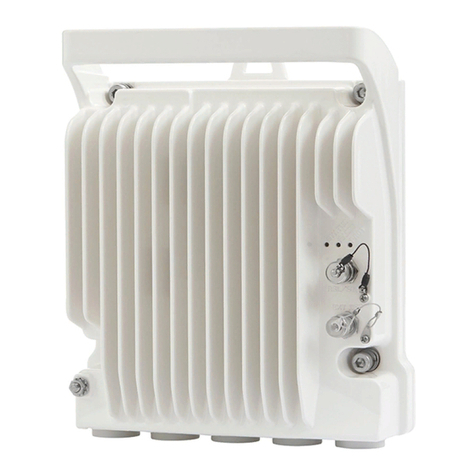
Cambium Networks
Cambium Networks PTP 820S Technical description

ICP DAS USA
ICP DAS USA ZT-2005-C8 user manual

Clavister
Clavister SG4300 Series Getting started guide
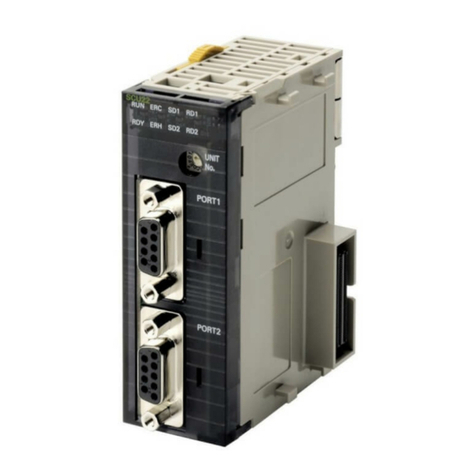
Omron
Omron SYSMAC CS1W-SCB41-V1 Operation manual
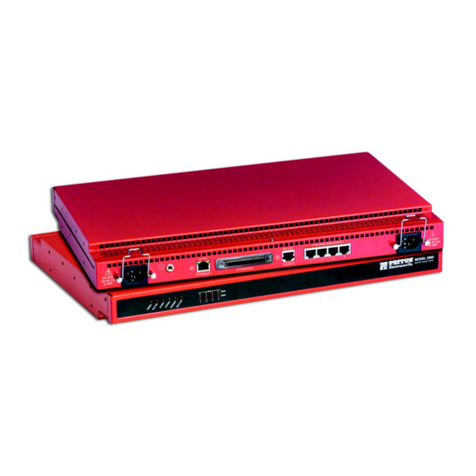
Patton electronics
Patton electronics NetLink 2960 RAS datasheet
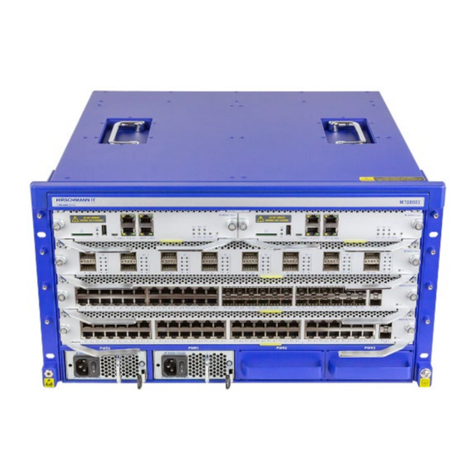
Belden
Belden HIRSCHMANN IT MAMMUTHUS MTM8000 Series user manual
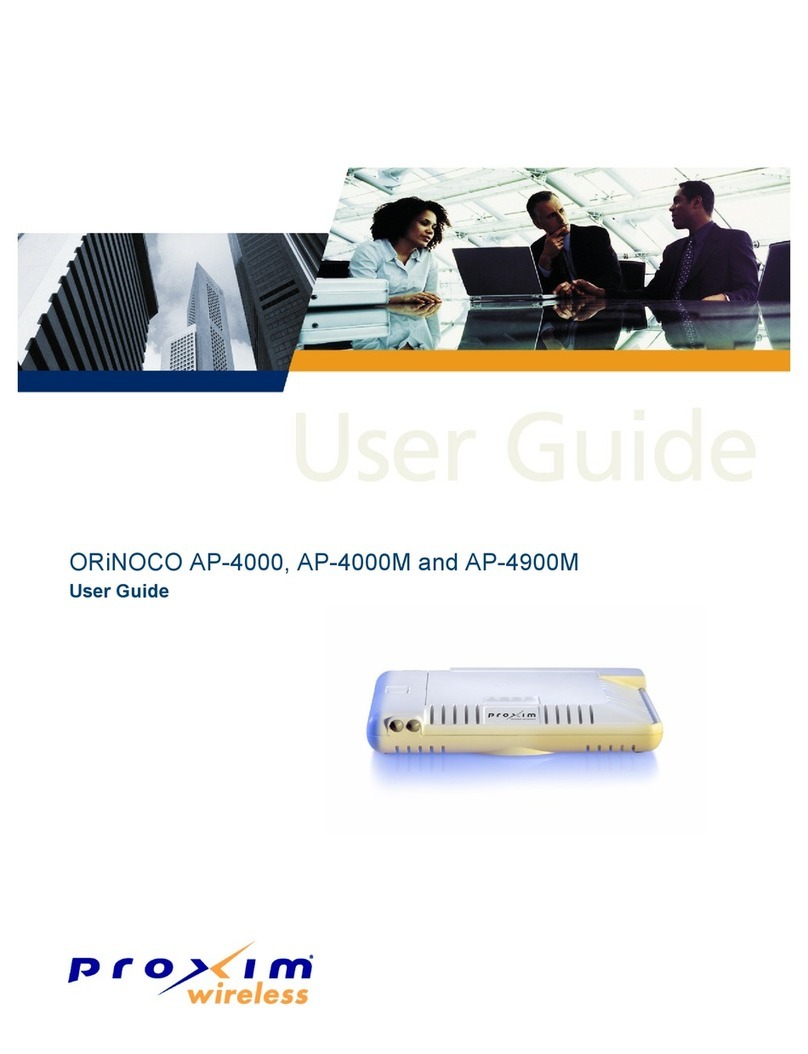
Proxim
Proxim ORiNOCO AP-4000 user guide
